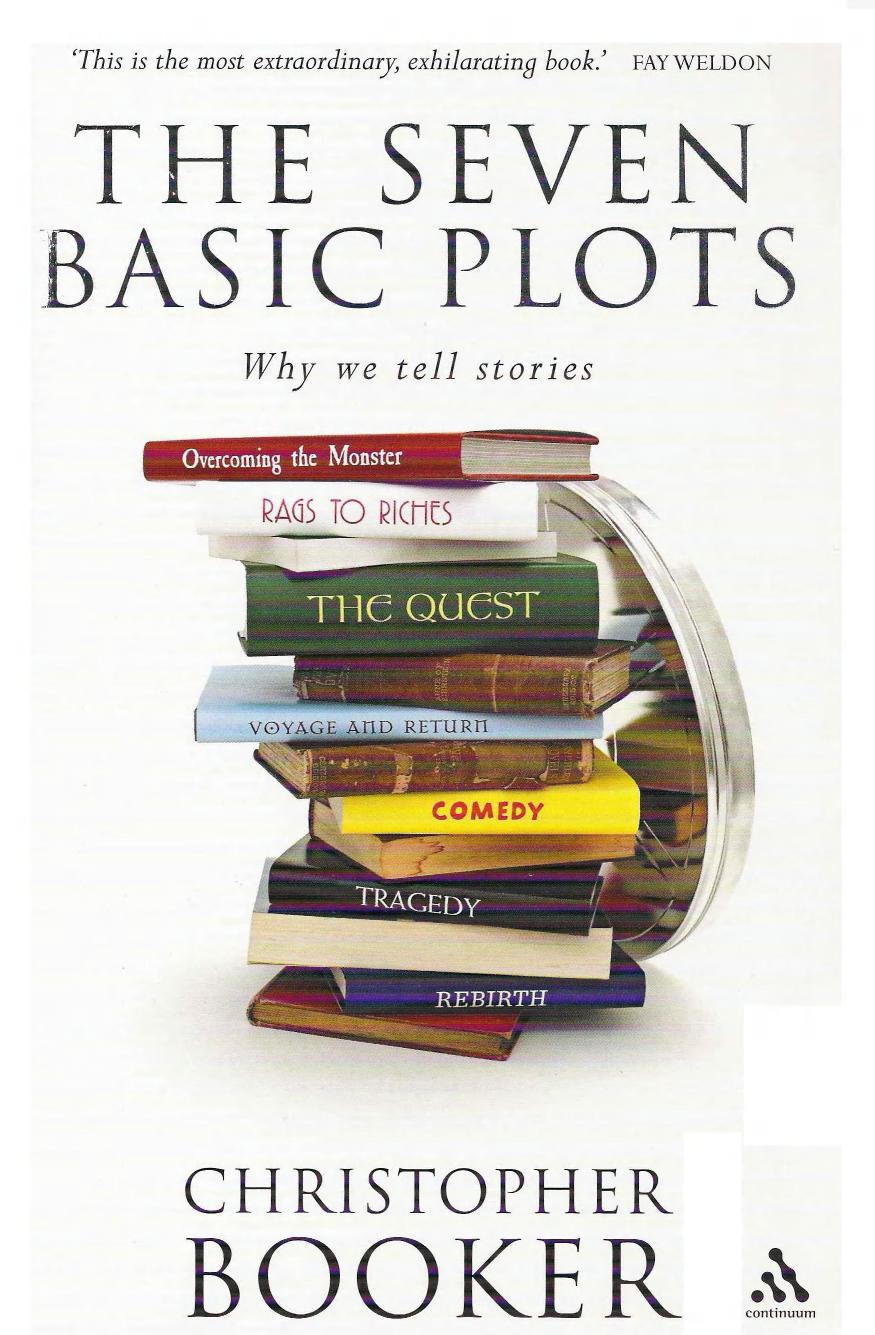The Seven Basic Plots by Christopher Booker

Author:Christopher Booker
Language: eng
Format: mobi, epub, pdf
Tags: Non-fiction, Language.Writing, Reference, Literary Studies, Amazon.com, Retail
ISBN: 9780826480378
Publisher: London ; Continuum, 2004.
Published: 2009-01-02T00:00:00+00:00
`Before us was a great excavation, not very recent, for the sides had fallen in and grass had sprouted on the bottom ... all was clear ... the cache had been found and rifled: the seven hundred thousand pounds were gone!'
R. L. Stevenson, Treasure Island
`When the Supreme Value and the Supreme Negation are both outside, the soul is void.'
C. G. Jung
Continuing our survey of what happens to the archetypal plots when they are appropriated by the ego, this chapter looks at dark and sentimental versions of the Quest, Voyage and Return and Comedy.
The fundamental archetype of the Quest, as in the Odyssey, shows us the journey of its hero towards a distant goal which, when it is reached, turns out to symbolise his Self-realisation. The inversion of this, as in Moby Dick, shows us a dark hero whose life-journey is dedicated to destroying an outward projection of the Self, bringing about his own self-destruction.
Such a truly dark form is very rare in storytelling. But we can see the essence of the Quest archetype in a number of well-known stories which are shaped around a dark hero's obsessive drive to reach some distant, all-important goal; but which then turns out to be the destruction of some figure symbolising wholeness and `light'.
A powerful example was that early modern novel Samuel Richardson's Clarissa (1748). Few books have caused more of a stir in the history of literature than this immensely long story, originally published in eight huge instalments, providing an early premonition of the earthquake which, over the century following, was about to shake Western storytelling to its foundations.
The story centres on the obsessive desire of its dashing libertine hero, Lovelace, to seduce the beautiful, virtuous, strong-minded heroine Clarissa. When she is locked away by her family for refusing the man they want her to marry, Lovelace rescues her and carries her off to London. But this only places her in his power, so he is free to lay siege to her virtue by every trick and device he can think of. Withstanding all his assaults, she remains a model of the idealised anima, the soul of chaste and sovereign femininity; until, after many hundreds of pages, Lovelace finally manages to drug and rape her. This leaves her so devastated that she begins to lose her reason. She finally escapes, to endure more horrors such as being thrown into prison, but is rescued by Belfort, who represents Lovelace's `light Alter-Ego: Under his care, she recovers her sanity but continues to decline physically, until at last, having made her peace with the world and with God, she dies. This tragic conclusion, showing a virtuous heroine gratuitously destroyed, aroused such horror when the novel was first appearing in successive instalments that readers all over Europe rushed to protest, imploring Richardson to provide a happier ending. But the deed was done. And, after her death, Lovelace is finally paid out for his crime when he is killed in a duel by Clarissa's cousin.
Since it is not
Download
The Seven Basic Plots by Christopher Booker.epub
The Seven Basic Plots by Christopher Booker.pdf
This site does not store any files on its server. We only index and link to content provided by other sites. Please contact the content providers to delete copyright contents if any and email us, we'll remove relevant links or contents immediately.
| Books & Reading | Comparative Literature |
| Criticism & Theory | Genres & Styles |
| Movements & Periods | Reference |
| Regional & Cultural | Women Authors |
4 3 2 1: A Novel by Paul Auster(12333)
The handmaid's tale by Margaret Atwood(7711)
Giovanni's Room by James Baldwin(7256)
Asking the Right Questions: A Guide to Critical Thinking by M. Neil Browne & Stuart M. Keeley(5712)
Big Magic: Creative Living Beyond Fear by Elizabeth Gilbert(5681)
Ego Is the Enemy by Ryan Holiday(5351)
The Body: A Guide for Occupants by Bill Bryson(5033)
On Writing A Memoir of the Craft by Stephen King(4893)
Ken Follett - World without end by Ken Follett(4688)
Adulting by Kelly Williams Brown(4536)
Bluets by Maggie Nelson(4515)
Eat That Frog! by Brian Tracy(4484)
Guilty Pleasures by Laurell K Hamilton(4395)
The Poetry of Pablo Neruda by Pablo Neruda(4066)
Alive: The Story of the Andes Survivors by Piers Paul Read(3999)
White Noise - A Novel by Don DeLillo(3982)
Fingerprints of the Gods by Graham Hancock(3966)
The Book of Joy by Dalai Lama(3947)
The Bookshop by Penelope Fitzgerald(3812)
